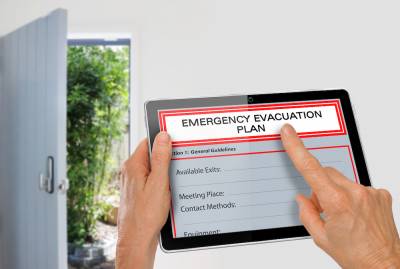Tips You Should Consider When Planning for an Evacuation
Let’s face it-contemplating a catastrophe can be stressful in itself. Does your family have a disaster and communication plan? While it certainly is not enjoyable to think about, why not start this year with a plan to keep you and your loved ones safe and secure should a disaster strike? According the federal government’s website, Ready.gov, here are the top tips you should consider when planning for an evacuation
Before an evacuation:
Learn the types of disasters that are likely in your community and the local emergency, evacuation, and shelter plans for each specific disaster.
-Plan how you will leave and where you will go if you are advised to evacuate.
-Identify several places you could go in an emergency such as a friend’s home in another town or a motel. Choose destinations in different directions so that you have options during an emergency.
-If needed, identify a place to stay that will accept pets. Most public shelters allow only service animals.
-Be familiar with alternate routes and other means of transportation out of your area.
-Always follow the instructions of local officials and remember that your evacuation route may be on foot depending on the type of disaster.
-Develop a family/household communication and re-unification plan so that you can maintain contact and take the best actions for each of you and re-unite if you are separated.
-Assemble supplies that are ready for evacuation, both a “go-bag” you can carry when you evacuate on foot or public transportation and supplies for traveling by longer distances if you have a personal vehicle.
If you have a car:
-Keep a full tank of gas in it if an evacuation seems likely. Keep a half tank of gas in it at all times in case of an unexpected need to evacuate. Gas stations may be closed during emergencies and unable to pump gas during power outages. Plan to take one car per family to reduce congestion and delay.
-Make sure you have a portable emergency kit in the car.
-If you do not have a car, plan how you will leave if needed. Make arrangements with family, friends or your local government.
During an evacuation:
A list of open shelters can be found during an active disaster in your local area by downloading the FEMA app
-Listen to a battery-powered radio and follow local evacuation instructions.
-Take your emergency supply kit.
-Leave early enough to avoid being trapped by severe weather.
-Take your pets with you, but understand that only service animals may be permitted in public shelters. Plan how you will care for your pets in an emergency now.
If time allows:
-Call or email the out-of-state contact in your family communications plan. Tell them where you are going.
-Secure your home by closing and locking doors and windows.
-Unplug electrical equipment such as radios, televisions and small appliances. Leave freezers and refrigerators plugged in unless there is a risk of flooding. If there is damage to your home and you are instructed to do so, shut off water, gas and electricity before leaving.
-Leave a note telling others when you left and where you are going.
-Wear sturdy shoes and clothing that provides some protection such as long pants, long-sleeved shirts and a hat.
-Check with neighbors who may need a ride.
-Follow recommended evacuation routes. Do not take shortcuts; they may be blocked.
-Be alert for road hazards such as washed-out roads or bridges and downed power lines. Do not drive into flooded areas
After an evacuation:
-If you evacuated for the storm, check with local officials both where you’re staying and back home before you travel.
-Residents returning to disaster-affected areas after significant events should expect and prepare for disruptions to daily activities, and remember that returning home before storm debris is cleared is dangerous.
-Let friends and family know before you leave and when you arrive.
-Charge devices and consider getting back-up batteries in case power-outages continue.
-Fill up your gas tank and consider downloading a fuel app to check for outages along your route.
-Bring supplies such as water and non-perishable food for the car ride.
-Avoid downed power or utility lines; they may be live with deadly voltage.
-Stay away and report them immediately to your power or utility company.
-Only use generators away from your home and NEVER run a generator inside a home or garage, or connect it to your home’s electrical system.




